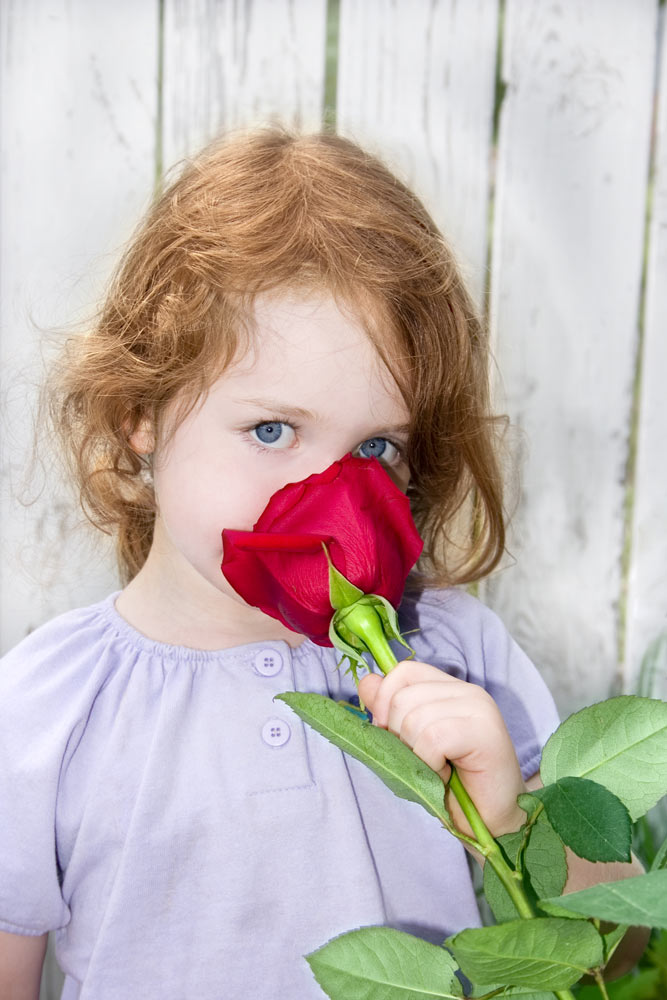
For tools that are so influential to our experience of the world, we tend to overlook the sense of smell and sense of taste when we think about our children's development. When was the last time you wondered, "Am I doing all I can to make sure my child has a vibrant sense of smell?" And beyond expressing frustration with mealtime picky-eaters, how often do you really worry about your child's ability to discern bitter from sweet?
While they don't draw a lot of attention to observers, the cooperating senses of smell and taste are vitally important to the child's world. The sense of smell is the most advanced of the senses at birth. During the third trimester before birth, infants can smell what you smell and absorb other aromas through the amniotic fluid, and right after birth will show a preference for the smells they associate most with their mothers. Newborn's preference for breastmilk is a reflection of their sense of smell, and the smells that are associated with comfort can trigger that emotion in new settings. A blanket that smells like mom or the comfort of an infant's familiar baby lotion can help infants to self-soothe in stressful environments. Likewise, those taste buds that started developing in the seventh week of pregnancy continue to develop rapidly after birth. While infants show a preference for sweet tastes (both breastmilk and formula have sugars in them,) they quickly develop the ability to discern and enjoy other tastes as well.
At home, you can play with your child's ability to smell and taste through all the easy ways you find these stimuli around you. Slow down your own pace, to draw attention to the smell of crayons or leather shoes. Take a moment to name new tastes when you introduce them to your child. Model enjoying these different stimuli to support your child's receptivity to explore. While you might avoid wasabi or chili powder, mustards or peppers (which all can "stick" in the throat and cause a burning sensation in isolation,) you can play tasting and smelling games in the kitchen with other common spices. Most importantly, model exploring these new sensations. While most children will remain adverse to sour and bitter foods until after their fifth birthday, they will be able to discern sweet from salty much earlier and can develop as complicated a palette as the variety of foods and smells that are regularly offered to them.
In the classroom, you'll see structured opportunities to develop the discernment of taste and smell, including tasting activities that allow children to compare and name different tastes and the smelling jars, pairs of cylinders that are identical except for what you smell when you open the lids. These lessons are presented with the same patterns and structures as the other sensorial materials, reinforcing cognitive patterns through the isolation of single concepts in self-correcting, beautiful materials.
And the importance and development of these senses doesn't stop in early childhood. While there is a plateau in elementary, research indicates that adolescents experience another peak both in their sensitivity to odor and taste and to the importance they report for those experiences. These are experiences that become closely linked to memories, a phenomenon teachers can make use of as learners' content demands also expand. While the simple structure of the cylinders may not be appealing to adolescents, offer opportunities to explore nature, to compare and contrast tastes and smells as they build their scientific knowledge, to cook together and encounter new foods, new smells and new experiences. In the same way that the scent of your grandmother's kitchen or the taste of a favorite food from childhood can bring you back to those irreplaceable memories, learners in our classrooms have equally strong connections to taste and smell. While it might not keep you up at night, it's a fascinating phenomenon of the human experience and one which Montessori classrooms support and propel through authentic, integrated learning.
#Curriculum #Sensorial #Primary #FirstPlane #ForParents
